Christian Xell from Tangotunes.com asked me a couple of months ago to write a small article about Juan D’Arienzo’s second studio contract during the years 1935-1939. Here is an excerpt:
On 24th June 1935, Carlos Gardel, the most popular tango star at that time, died tragically. Such was Gardel’s prominence in Tango music that his sudden death left a void, but that was to change. Precisely 8 days after this sad event, Juan D’Arienzo reentered the recording studio, signing an initially short contract with the Victor label for a series of instrumental themes. This time, D’Arienzo would put aside his violin and take the lead as conductor for his ensemble. The first record he produced with Victor included the vals « Desde El Alma » on the A-side and the tango « Hotel Victoria » on the B-side. As it turned out, he would remain faithful to the same record label for the rest of his long career, laying the foundations that would revolutionise the tango genre forever, and open the door to the Golden Age of tango!
D’Arienzo constructed his new arrangements around four accented beats per bar, creating the impression of a more sustained rhythm where the beat is over the melody. The new « D’Arienzo sound » was characterised by a faster tempo that suggested more action and movement, it subconsciously recalled fundamentally natural rhythms, like that of a heartbeat. This new music had a great impact on all the major bands of the time and by the end of the 1930s most of the orchestras had adopted a faster pace and stronger accentuation of the beat. Everybody got caught up by the D’Arienzomania and tried to catch up with its success.
[…]
Christian and his team were busy on making new transfers from shellacs available on their website which cover this complete period of D’Arienzo’s second outfit. Some of these titles had already been published previously by Tangotunes but they decided to do the whole series again. Right now three download volumes are finished and already available on their website but they want to release all of the titles. The rest will be available soon. I think it’s worth to dig a little deeper into this great restoration work as it has some aspects which witness very high transfer standards.
In recent times there have been two major papers which sustainably unveiled a new approach towards transferring and dealing with tango records. One is Age Akkerman’s manual on how to retune tango recordings called Lost in History – the Keys of Tango Music. This analysis is based on the conclusion that most of the CD transfers which are available nowadays are out of tune, most of the time overclocked. As a result all the instruments and voices in the recordings sound false and unnatural and he shows a method to bring them back into tune by analysing the frequencies of the A reference tone, which is also called the concert pitch.
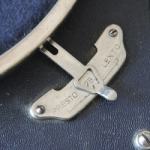 Often these pitch shifts were introduced intentionally by some recording companies in later reeditions, see my previous posts on this subject, or, happened directly during the recording sessions. Peter Copeland shows in his Manual of Analogue Sound Restorations also some possible causes which could have influenced on the correct speed of a 78 rpm recording, like fluctuations in the power network which wasn’t yet so stable as it is nowadays. In the 1930’s, especially in cold winters, the frequency of the current could vary from the standard 60 Hz oscillation and make the motors of the record cutter run at a slightly different speed (nevertheless Buenos Aires is less likely to have had very cold winters) … Most of the record players at that time, as Age stressed out, had a pitch control, permitting for an instant correction by the listener.
Often these pitch shifts were introduced intentionally by some recording companies in later reeditions, see my previous posts on this subject, or, happened directly during the recording sessions. Peter Copeland shows in his Manual of Analogue Sound Restorations also some possible causes which could have influenced on the correct speed of a 78 rpm recording, like fluctuations in the power network which wasn’t yet so stable as it is nowadays. In the 1930’s, especially in cold winters, the frequency of the current could vary from the standard 60 Hz oscillation and make the motors of the record cutter run at a slightly different speed (nevertheless Buenos Aires is less likely to have had very cold winters) … Most of the record players at that time, as Age stressed out, had a pitch control, permitting for an instant correction by the listener.
The other paper is that of Igor “El Espejero” Shpigelman, called the Equalizer-4-TJ, The Equalizer fo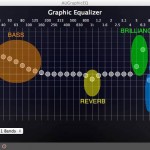 r Tango DJs. It’s a comprehensive guide which shows how to use an equalizer to get the best sound out of a given tango recording. Showing precisely how the sound spectrum of a tango recording goes and where frequencies might be attenuated or amplified to obtain a certain result to fit the venue or the sound quality. This work is very interesting as it does not exclusively apply to the playback domain, the tango djing, but also shows some interesting findings which could be applied to the transfer of recordings.
r Tango DJs. It’s a comprehensive guide which shows how to use an equalizer to get the best sound out of a given tango recording. Showing precisely how the sound spectrum of a tango recording goes and where frequencies might be attenuated or amplified to obtain a certain result to fit the venue or the sound quality. This work is very interesting as it does not exclusively apply to the playback domain, the tango djing, but also shows some interesting findings which could be applied to the transfer of recordings.
According to Tangotunes, the idea of the new D’Arienzo series is to offload most of the processing into the analog domain. Using a good restoration preamplifier and an equalizer to have the best and purest deemphasized signal for a careful last digital processing mainly limited to click and crackle removal. If you put together the two before mentioned methods of retuning and equalizing and offload those steps into the analog field then you can get excellent transfers. And that’s what Tangotunes did!
Doing the retuning in the analog phase, by speeding up or down the turntable just inverses what happened when the recording speed fluctuated and the musical keys went out of tune. Doing it on a digital sound file, though, by computing all samples, might introduce quite some interpolation errors. Where information is missing, the computer will add something, so the result could be different. By the way, the computing gets more and more imprecise the higher the percentage factor of a digital pitch filter.
And indeed, up to now, the best transfers I can currently think of are earlier LP transfers done by the Japanese collectors label CTA, Club Tango Argentino. Their LP transfers are among the best restoration works on tango recordings I ever heard. To a certain extent, these vinyls sound even better than their recent CD transfers as they did most likely not undergo any digital processing at all. Hence, reproducing the initial sound signal of the original recording session in the purest imaginable manner.
It’s interesting to recall what these original recording sessions were: They were direct-to-disk recordings. No multichannel, no tape, no editing, no overdubbing, just plain recording directly onto the wax platter without any stops, intermediate or post-production steps. This also meant that there was no way to cheat or to alter the result and there had been very few takes because of the high price and intensive preparation work of the recording support. Most of the time these sessions were done in one flush at first take. Unimaginable today. Though, this direct-to-disk process had been around until the end of the LP era as you can read in the aforementioned Wikipedia article! And it’s coming back, look for instance at the new label Berliner Meister Schallplatten, they are reintroducing the direct-to-disk process with vinyls and taking it to a new climax, they even invite the public into the studio during a recording session. The direct-to-disk process makes me think about Roland Barthes who wrote about silver photography in his essay “La Chambre claire”, long before the advent of Photoshop, that the noema of photography is the shocklike ça a été (that has been), as with these direct-to-disk recordings which are an immediate conserved state of sound without any cosmetics! A shocking document of what has been … A great deal of the emotions we live while listening or dancing to these recordings certainly result from this circumstance!
The Tangotunes series has the mention “Golden Ear Edition” to distinguish it from their former transfers of the same orchestra. Now, the retuning effort clearly merits this self assigned label. It’s something quite special which hasn’t been done yet openly for larger reeditons. According to Tangotunes, they used the CTA D’Arienzo transfers (CTA-301 to CTA-318) as a reference and found out that during the year 1939 the average A concert pitch measured in these recordings suddenly changed from 435 Hz to 440 Hz:
“When we measure the pitch, it should be taken from the piano in the recording, provided that the tuning of bandoneons could range from 435 Hz to 445 Hz. The violins are not a well-tempered instrument and the musicians always adjust themselves to the piano or the bandoneon, so we cannot rely on them.
Since the only possible pitch would be 435 Hz and 440 Hz, the figures significantly show that:
1. The standard pitch of 435 Hz was used by D’Arienzo’s Orquesta until 1939.
2. The standard pitch of 440 Hz was applied by D’Arienzo’s Orquesta since 1940
3. The CTA recordings, statistically, were 2.60 Hz higher transferred in average than the original play, which is around 10-15 cents.[…] Naturally, we can find that the time when D’Arienzo’s orquesta was retuned is between 1939-03-03 to 1939-04-18.”
Source: Frank Jin of Tangotunes
The dramatic pitch jump up to ~448 Hz in the diagram between 1939 and 1941 could also be a hint that the speed of the recordings could have been intentionally increased on some of D’Arienzo’s studio sessions at around 1940-1941 as the Tangotunes document further states. According to them there are also some recordings where one is able to hear differently tuned bandoneons playing together during this retuning periode, like in Di Sarli’s recording El retirao from 11.12.1939 …
I have traced the spectrum of different versions of the recording El cencerro, which is one of the titles of the new Tangotunes series, all are in 44.1 kHz 16 bit, FLAC, the last Tangotunes is in AIFF. What we can see in the following spectrograms is that the first, taken from the El Bandoneón CD-43, has nearly sheer edges on the left in the bass, cutting off at around 60 Hz and on the other extreme, a high cut starting almost at around 4 kHz, leaving not so much music in the low and high frequencies. In the middle range you can see also a drop between 1000 and 2000 Hz, maybe due to the strong echo effect which had been added to this version.
Comparing the Audio Park to the CTA, one can see that Audio Park cuts off a little less towards the 20 kHz, in the treble, compared to the CTA version. The CTA on the other hand seems to leave in all the infra-bass region. Just judging from the spectrum the Tangotunes seems to have the most balanced frequency range. Listening to it confirms this very good impression …
One word about the background noise which is quite subtle on the Tangotunes AIFF version and a little stronger on the CTA and Audio Park CDs: Once coffee and milk are mixed, it’s difficult to remove the milk without removing some coffee too. The same applies to sound restoration. It’s better to attenuate the background noise and not to try to remove it completely. The El Bandoneón version is the quietest because of its strong shelve filters in the bass and treble regions but it’s therefore missing music too, sounds muffled and has added artefacts, a strong reverb effect and other noises resulting from heavy filtering and which are actually not in D’Arienzo’s music! From a psychoacoustic point of view, the human ear is very well capable of removing carefully attenuated background noise from our perception. Whereas it is very aware and annoyed by artefacts and missing frequencies. In the end, we can use an equalizer to cut off hiss and other background noises and individually decide how much to remove during playback. Most of the time, anyway, it’s the bad PAs at the venues which eat all the background noise as they tend to be good in bass and mid-range reproduction but often are deficient in high tones. From my experience, events with audiophile 3-way systems are rare.
As Tangotunes is dedicated to music for the modern milongas the two polcas from 1937 will be missing as polca is not so much in vogue anymore 🙂 By the way, the Tangotunes version of Don Esteban is, like the CTA version, take 2. Could be cool to add take 1 with the two added Biagi solos too which is quite rare without reverb effect. For a deeper analysis of take 1 and 2 see my article News from Don Esteban.
Their recent Ángel D’Agostino transfers were already very good but they missed the retuning part which is now integrated into this new series. Already since the D’Agostino series, their sound files look very well done, no clippings left as it had been the case with some files in former series.
 During our talks, Christian told me: “What I find most exciting is that everybody can use their ears to get an idea if a recording sounds right and if the speed is correct. Especially with strong speed fluctuations this is easily possible.” So let’s trust our ears, that’s what it’s all about!
During our talks, Christian told me: “What I find most exciting is that everybody can use their ears to get an idea if a recording sounds right and if the speed is correct. Especially with strong speed fluctuations this is easily possible.” So let’s trust our ears, that’s what it’s all about!

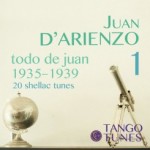
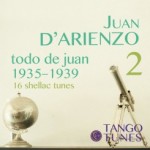
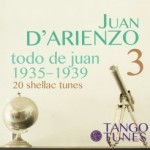
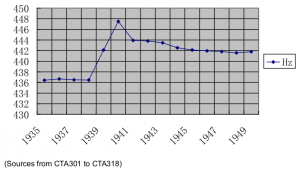
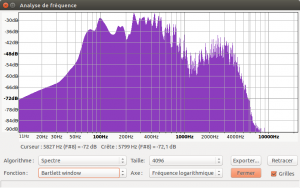
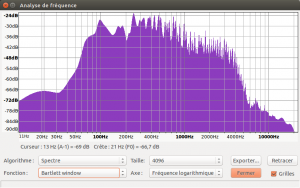
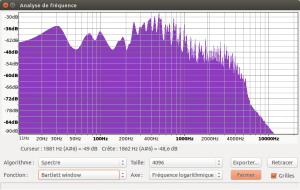
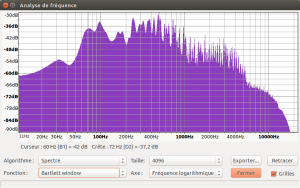
Jens-Ingo, this is really interesting information about the pitch in the D’Arienzo orchestra and the pitch shift in 1939. The timing of this change is very curious and I am researching it. Thank you for this article, and thanks also to Frank Jin for the original research. No I’m off to listen to Di Sarli’s ‘El Retirao’!
Michael
Pingback: Танго-эквалайзер: как добиться наилучшего звучания танго Золотого Века | Tango en el Espejo
Pingback: EQ 4 TJ: Getting the Best Sound out of Your Tango Records | Tango en el Espejo